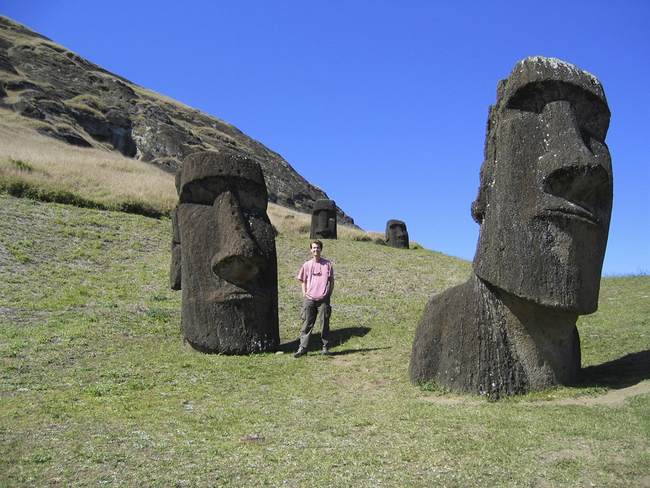We support our Publishers and Content Creators. You can view this story on their website by CLICKING HERE.

Have you heard about “degrowth communism?” Degrowth isn’t a new idea but recently a Japanese Marxist named Kohei Saito has published a book promoting his own brand of degrowth which adds the word communism to it.
Advertisement
Any attempt to blend degrowth with capitalism is doomed to fail,” he proclaims in “Slow Down: The Degrowth Manifesto.” Capitalism doesn’t just tend toward growth, he says, but requires it. “To demand the cessation of all these things — to demand deceleration — is in fact to demand capitalism’s end.”
This idea might sound extreme, but it has found a considerable audience: “Slow Down,” which was released in the United States in January, has sold half a million copies since it was first published in Japan in 2020. In it, Saito quotes the Swedish activist Greta Thunberg, who denounced an older generation for only being “interested in solutions that would enable you to carry on like before.” Saito himself was born in 1987, and suggests that because he did not live through the Cold War, he was able to study Marxism without “reflexively” imposing the reality of the Soviet Union onto Marx’s work. By demanding “capitalism’s end,” Saito is just getting started; what he calls for is not just degrowth, but “degrowth communism.”
Other Marxists are not happy with Saito adopting their hero for his degrowth cause.
On the pro-labor left, Jacobin magazine published multiple articles criticizing degrowth in general and Saito in particular, calling his vision a “political disaster” that would hurt the working class. And don’t get the Marxist textualists started; they accuse Saito of distorting the great man’s words in order to portray Marx as the OG degrowth communist.
Advertisement
At the base of all of this is the idea that environmental concerns necessitate the abandonment of growth and therefore capitalism. This, as I said above, is not a new idea.
In 1972, the French theorist André Gorz coined the word décroissance to ask whether “no-growth — or even degrowth” in material production was necessary for “the earth’s balance,” even if it ran counter to “the survival of the capitalist system.” Gorz was writing the same year that “The Limits to Growth” was published, a report by a group of scientists warning that surges in population and economic activity would eventually outstrip the carrying capacity of the planet.
Easter Island, aka Rapa Nui, has been famously used by bestselling author Jared Diamond as a kind of historical object lesson for this idea.
Diamond in his 2005 book, “Collapse,” used Easter Island as a cautionary example of how the exploitation of limited resources can result in catastrophic population decline, ecological devastation and the destruction of a culture through infighting.
Diamond’s take on the fate of Rapa Nui was bolstered by research that suggested the remote island may have been overburdened with as many as 17,000 inhabitants, leading to an ecological collapse. But new research suggests the actual number of people living there may have been less than a quarter of that, putting a hole in the collapse thesis.
Advertisement
…in the new study, Davis and his colleagues found that the maximum number of people on Rapa Nui was nearly 4,000, less than one-quarter of that higher estimate…
The researchers found that rock gardens, identifiable by patterns of vegetation and soil composition, covered about three-quarters of 1 square kilometer (0.4 square mile), and rock garden cultivation alone would only have supported around 2,000 people. When combined with estimates for the availability of fishing and other marine foods, the team believes Rapa Nui could have sustained a population of 3,901 people…
“Ultimately, we don’t have evidence that thousands and thousands of people lived there. In fact, when Europeans first make contact with Rapa Nui people, they only report seeing maybe 3,000 or 4,000 people and report that people were in good spirits,” Davis said.
Of course Easter Island was always just an object lesson. Still it’s interesting that the idea we’re doomed to exceed the carrying capacity of the planet is not something Easter Island demonstrates.
The Washington Post published an editorial today about degrowth and the long history of human doomerism of which it is just the latest example.
Ever since Thomas Malthus argued just over 200 years ago that population growth would outstrip “the power of the earth to produce subsistence for man,” there has been a continuous parade of Cassandras fretting that humanity is about to exhaust the planet’s carrying capacity.
Neo-Malthusian thinking inspired such 20th-century writings as Paul Ehrlich’s 1968 book, “The Population Bomb,” and the Club of Rome’s 1972 “The Limits to Growth,” which predicted civilization would end “sometime within the next one hundred years.” In “Toward a Steady-State Economy,” published in 1973, economist Herman Daly argued that economic growth should be resisted for the sake of the environment…
“Degrowth” — the brand name for neo-Malthusianism — ignores how ingenuity and innovation have repeatedly empowered humanity to overcome ecological constraints identified by Malthus, Ehrlich, et al…
Unsurprisingly, most degrowthers were born not in societies that have tried and failed to do without growth but in those that are already rich.
Advertisement
There are solutions for the problems we face as a species. They won’t be found in Marxist communes.

 Conservative
Conservative  Search
Search Trending
Trending Current News
Current News 







